Les
 PETITS
PETITS 
MACARONS
C OLORFUL F RENCH C ONFECTIONS
T O M AKE AT H OME
Kathryn Gordon & Anne E. McBride
RUNNING PRESS
PHILADELPHIA LONDON
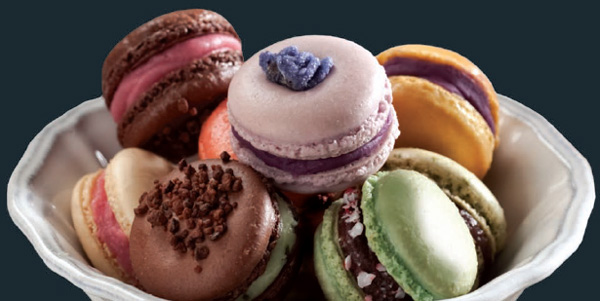
2011 by Kathryn Gordon and Anne E. McBride
Photographs 2011 by Steve Legato
Published by Running Press,
A Member of the Perseus Books Group
All rights reserved under the Pan-American and International Copyright Conventions
This book may not be reproduced in whole or in part, in any form or by any means, electronic or mechanical, including photocopying, recording, or by any information storage and retrieval system now known or hereafter invented, without written permission from the publisher.
Books published by Running Press are available at special discounts for bulk purchases in the United States by corporations, institutions, and other organizations. For more information, please contact the Special Markets Department at the Perseus Books Group, 2300 Chestnut Street, Suite 200, Philadelphia, PA 19103, or call (800) 810-4145, ext. 5000, or e-mail .
ISBN 978-0-7624-4258-4
Library of Congress Control Number: 2010941544
E-book ISBN 978-0-7624-4363-5
9 8 7 6 5 4 3 2 1
Digit on the right indicates the number of this printing
Cover and interior design by Amanda Richmond
Edited by Kristen Green Wiewora
Typography: Neutra and Mrs. Eaves
The publisher would like to thank: Crate & Barrel, King of Prussia, PA; Manor Home & Gifts, Philadelphia, PA; Scarlett Alley, Philadelphia, PA; and Sur la Table, King of Prussia, PA; for graciously loaning merchandise to be used in the photography.
Running Press Book Publishers
2300 Chestnut Street
Philadelphia, PA 19103-4371
Visit us on the web!
www.runningpresscooks.com
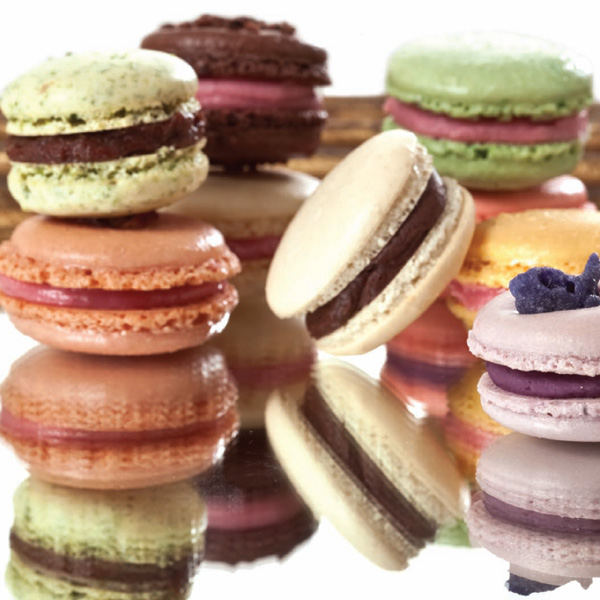

to JESSIE RILEY & RON McBRIDE,
who indulge our macaron obsession

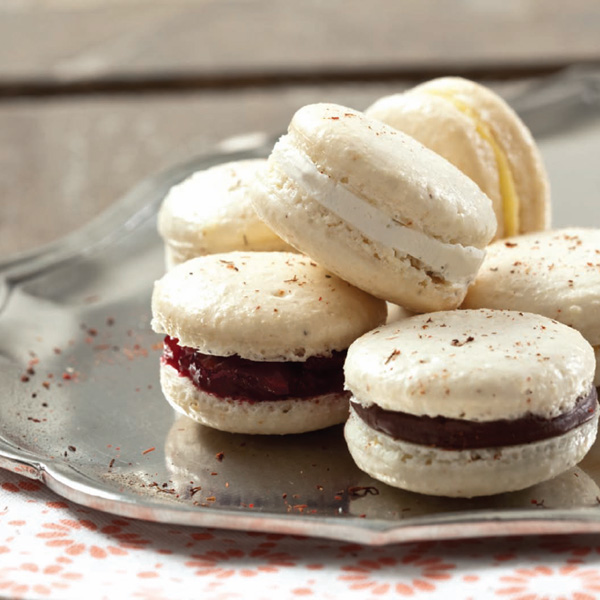

CONTENTS

*
*
*
*
*
*
*
*
*
*
*
*
*
*
*
*
*
*
*
*
*
*
*
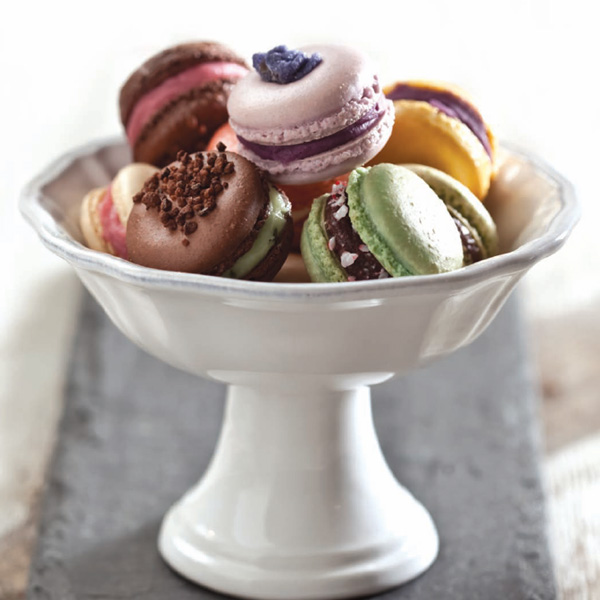


M acarons first capture our attention with tantalizing colors light green, golden yellow, hot pink, or velvety brownthat give them the appearance of jewels in a pastry shop case. But they do not stand on looks alone. The contrast between their crisp shells and soft fillings make them the most perfect way to satisfy a craving. Evoking timeless images of polished Parisians nibbling in delicate tea salons or sophisticated ptisseries, they transport us to a more elegant time and place in just two bites.
I first began making macarons more than fifteen years ago, when I was working at The Rainbow Room in New York City. We served them as mignardises to diners who would momentarily turn away from the stunning views to admire thema pleasure more instantaneous, more within reach. Ever since that time Ive been fascinated with macarons, experimenting with different shell and filling flavors and always looking for them when traveling. I am fortunate to go to France every year, so my research is always freshand delicious. Not all macarons are created equal. Some are light and airy, others almost cake-like. Some have almost no shell and are very delicate, and others have a very thick shell that resists the bite.
In 2003, this interest led me to teach just one class on the subject at the Institute of Culinary Education in New York, where I had just begun working. Macarons have become so popular that I now offer a series of those classes, covering anything from savory to holiday macarons. I have also begun leading a macaron walking tour, for which I take students to various New York pastry shops. More recently, I have noticed more people asking about macarons because they are gluten-free, providing those suffering from celiac disease or gluten sensitivity with a treat they can consume without consequences.
The macaron should be one of the easiest cookies to make; after all, it only includes four ingredients. It speaks to its complexity, then, and makes it even more special, that top-ranked pastry chefs around the world cant agree on how to combine these ingredients to turn them into the footed, smooth-shelled marvel we love. Different macaron production techniques have evolved, primarily related to the meringue component. But my theory is simply that chefs learned to make a macaron where they first trainedas I did. Under the if its not broke, dont fix it theory, unless they encounter a persistent issue, I think that most chefs have not thought much about what really makes their favorite macaron method work, and simply believe their method to be the best one. The one technique they will probably agree on is the prolonged folding required to incorporate all the ingredients, called macaronner (more on this unusual technique in a moment).
About twelve years ago, I was privileged to become involved in the World Pastry Forum, an annual gathering of professional chefs. This unparalleled access allowed me to interview every world-champion pastry chef I met about his or her method, to figure out what truly works and what can be fixed at various stages of the process. This book is a result of those discussions. It includes three different base methods for meringues, along with all the tips, tricks, and troubleshooting techniques Ive ever come across. But one word of caution: Although experienced bakers do occasionally switch their production method (going from a French meringue to an Italian meringue base, for example), I believe strongly that there is no single holy grail. When you find the meringue procedureand whatever additional tricks you might needthat works for you, stay with that base method. You may have a bad macaron day, as even the best ptissiers confess to having. But the best approach is to practice that technique, keep a diary of what you did, and evolve flavor variations off that base.
MACARON OR MACAROONS?
THE FRENCH-STYLE COOKIE (WHAT WE CALL THE PARISIAN MACARON, but in France refers to all sorts of macarons) is spelled with only one o, and pronounced mah-kah-rohn. The final syllable is a very nasal sound that doesnt quite exist in English, almost as if saying round but with lips tightly pursed, and the nd is silent. No syllable is emphasized. The American macaroon, pronounced mah-kah-ROON, refers most often to unleavened cookies made with sweetened coconut flakes or with almond paste.


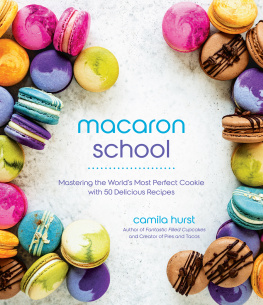
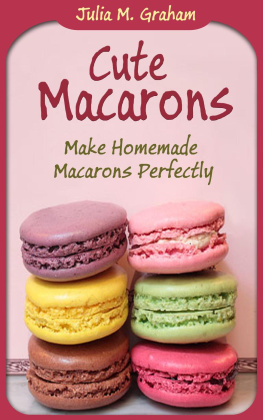
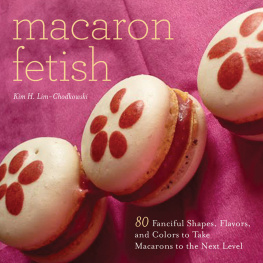
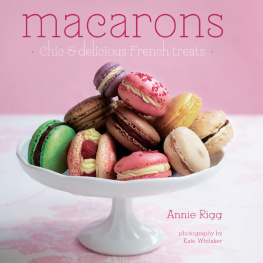
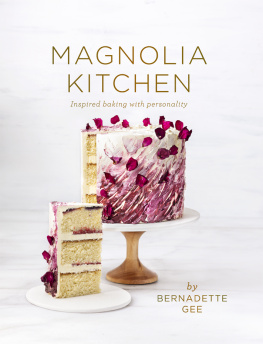
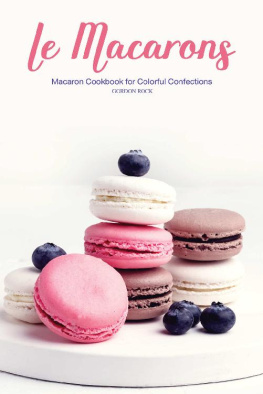
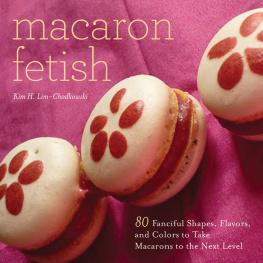
 PETITS
PETITS 









